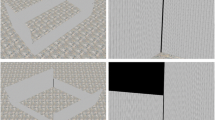Abstract
Verticality is a relevant feature in many environments. Despite its relevance, little is known about how it is processed. In work conducted with the RATP, we approached this problem by comparing three forms of graphic aids intended to provide information about the vertical dimension of subway stations. These graphic representations were : floorplans of each level of the station, the same floorplans associated with a frontal view of the station and a three-dimensional axonometric representation of the station. Use of these representations was compared to learning of the station by navigation. Sixty four persons took part in the experiment. Participants had to perform routes, to locate landmarks and to compare distances. The axonometric representation was found to be the easiest to learn. The results also showed that this representation enabled individuals to perform well on the different tasks by allowing them to elaborate a correct mental representation of the vertical relations between the levels of the station, and between the underground and the outside. Thus, this kind of representation seems to be an efficient navigational aid, allowing users to achieve good planning for their displacements.
This research was conducted with the support of the RATP (Régie Autonome des Transports Parisiens).
Access this chapter
Tax calculation will be finalised at checkout
Purchases are for personal use only
Preview
Unable to display preview. Download preview PDF.
Similar content being viewed by others
References
Arthur, P., & Passini, R.E. (1992). Wayfinding: People, signs, and architecture. McGraw-Hill Ryerson, Toronto.
Bronzaft, A.L., Dobrow, S.B., & O’Hanlon, T.J. (1976). Spatial orientation in a subway system. Environment and Behavior, 28, 185–203.
Chown, E., Kaplan, S., & Kortenkamp, D. (1995). Prototypes, location and associative networks (PLAN): Towards a unified theory of cognitive mapping. Cognitive Science, 19, 1–51.
Fontaine, S., & Denis, M. (1999). The production of route instructions in underground and urban environments. In C. Freska & D.M. Mark (Eds), Spatial information theory: Cognitive and computational foundations of geographic information science (pp. 83–94). Berlin: Springer.
Gärling, T., Böök, A., Lindberg, E., & Arce, C. (1990). Is elevation encoded in cognitive maps. Journal of Environmental Psychology, 10, 341–351.
Heft, H. (1996). The ecological approach to navigation: A Gibsonian perspective. In J. Portugali (Ed.), The construction of cognitive maps (pp. 105–132), Kluwer Academic Publishers.
Montello, D. R., & Pick, H. L., Jr. (1993). Integrating knowledge of vertically aligned large-scale spaces. Environment and Behavior, 25, 457–484.
Passini, R.E. (1984). Spatial representation, a wayfinding perspective. Journal of Environmental Psychology, 4, 153–164.
Weisman, J. (1981). Evaluating architectural legibility. Wayfinding in the built environment. Environment and Behavior, 13, 189–204.
Author information
Authors and Affiliations
Editor information
Editors and Affiliations
Rights and permissions
Copyright information
© 2001 Springer-Verlag Berlin Heidelberg
About this paper
Cite this paper
Fontaine, S. (2001). Spatial Cognition and the Processing of Verticality in Underground Environments. In: Montello, D.R. (eds) Spatial Information Theory. COSIT 2001. Lecture Notes in Computer Science, vol 2205. Springer, Berlin, Heidelberg. https://doi.org/10.1007/3-540-45424-1_26
Download citation
DOI: https://doi.org/10.1007/3-540-45424-1_26
Published:
Publisher Name: Springer, Berlin, Heidelberg
Print ISBN: 978-3-540-42613-4
Online ISBN: 978-3-540-45424-3
eBook Packages: Springer Book Archive




